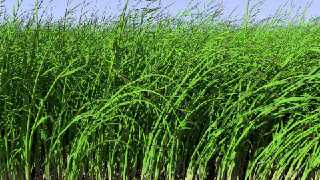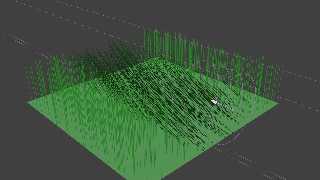 |
 |
|
 |
|
 |
|  |
|  |
|
 |
From: Thomas de Groot
Subject: Wind pattern code and reed stalk example
Date: 19 Sep 2014 08:45:31
Message: <541c256b@news.povray.org>
|
|
 |
|  |
|  |
|
 |
Attached is my code. You have all latitude to make changes, experiment,
or expand.
Enjoy!
Thomas
Post a reply to this message
Attachments:
Download 'wind_pattern.zip' (75 KB)
|
 |
|  |
|  |
|
 |
|
 |
|  |
|  |
|
 |
Thomas de Groot <tho### [at] degroot org> wrote:
> Attached is my code. You have all latitude to make changes, experiment,
> or expand.
>
> Enjoy!
>
> Thomas
In the console there are a lot of lines:
File '/usr/share/povray-3.7/include/math.inc' line 232: Possible Parse Error:
Normalizing zero-length vector.
But, the render started.
Interesting work! :) org> wrote:
> Attached is my code. You have all latitude to make changes, experiment,
> or expand.
>
> Enjoy!
>
> Thomas
In the console there are a lot of lines:
File '/usr/share/povray-3.7/include/math.inc' line 232: Possible Parse Error:
Normalizing zero-length vector.
But, the render started.
Interesting work! :)
Post a reply to this message
Attachments:
Download 'wind_pattern.jpg' (86 KB)
Preview of image 'wind_pattern.jpg'

|
 |
|  |
|  |
|
 |
From: Thomas de Groot
Subject: Re: Wind pattern code and reed stalk example
Date: 20 Sep 2014 03:22:07
Message: <541d2b1f@news.povray.org>
|
|
 |
|  |
|  |
|
 |
On 19-9-2014 21:53, LanuHum wrote:
> In the console there are a lot of lines:
> File '/usr/share/povray-3.7/include/math.inc' line 232: Possible Parse Error:
> Normalizing zero-length vector.
I know but I don't know what to do about that. As far as I know I have
dealt with all zero-length vectors.
Anyway, they have no effect on the render.
>
> But, the render started.
> Interesting work! :)
Thanks! :-)
Thomas
Post a reply to this message
|
 |
|  |
|  |
|
 |
|
 |
|  |
|  |
|
 |
Thomas de Groot <tho### [at] degroot org> wrote:
>
> Thanks! :-)
>
> Thomas
Thomas, anything I didn't understand in your files.
I would like to interpret it for Blender.
You can explain one after another, what it is necessary to do?
1 .
2 .
3 .
And so on :)
Thanks! org> wrote:
>
> Thanks! :-)
>
> Thomas
Thomas, anything I didn't understand in your files.
I would like to interpret it for Blender.
You can explain one after another, what it is necessary to do?
1 .
2 .
3 .
And so on :)
Thanks!
Post a reply to this message
|
 |
|  |
|  |
|
 |
From: Thomas de Groot
Subject: Re: Wind pattern code and reed stalk example
Date: 21 Sep 2014 04:27:59
Message: <541e8c0f@news.povray.org>
|
|
 |
|  |
|  |
|
 |
OK. How about this?
1. This technique uses the normals read at random locations on a
height_field to calculate the bending angle and orientation of reed
stalks as if they were blown by the wind.
2. Any height_field might do. However, a wave pattern is often observed
when watching corn or reed fields, so a height_field based on a ripple
or wave pattern will be most effective.
3. The first step is the creation of an image_map showing such a wave
pattern. This is done by setting parameter Mapping to 'on'. The code
provides a selection of settings but anything can changed until you get
an image satisfying to you. When this is indeed the case, you can set
parameter Mapping to 'off'.
4. Before going on, you will need one or more sets of reed stalks. Those
stalks need to be articulated following the Inverse Kinematic (IK)
procedure. This sounds more complicated than it is in reality when using
a modelling program. Just remember that each section of the stalk is
rotated /at the origin/ *and* /at its base/ and nested hierarchically
from extremity to base.
5. Now build a height_field using the wave pattern image_map. Play in
particular with the vertical scale of the height_field as this
influences the normals and hence the /strength/ of the wind to some degree.
6. To determine the random locations on the height_field, VRand_In_Obj()
is used as basis for the trace() function. This means that /any/ object
can be used to select the points. This can be useful to model irregular
reed fields with open patches of water for instance. In the provided
example, a simple box is used. The object can have any size but is only
effective when situated over the height_field of course.
7. A parameter WindStrength is provided to control the impact of the
wind on the bending of the reed stalks. Small amounts will already have
important effects, so be careful with this.
8. Provide the number of locations you need for filling the reed or corn
field.
Thomas
Post a reply to this message
|
 |
|  |
|  |
|
 |
|
 |
|  |
|  |
|
 |
Thomas de Groot <tho### [at] degroot org> wrote:
> OK. How about this?
>
Thanks, I will understand.
I doubt that I will be able to study it. :( org> wrote:
> OK. How about this?
>
Thanks, I will understand.
I doubt that I will be able to study it. :(
Post a reply to this message
|
 |
|  |
|  |
|
 |
From: Thomas de Groot
Subject: Re: Wind pattern code and reed stalk example
Date: 21 Sep 2014 10:25:25
Message: <541edfd5$1@news.povray.org>
|
|
 |
|  |
|  |
|
 |
On 21-9-2014 15:41, LanuHum wrote:
> Thomas de Groot <tho### [at] degroot org> wrote:
>> OK. How about this?
>>
> Thanks, I will understand.
> I doubt that I will be able to study it. :(
Don't hesitate to ask if in doubt, though.
Thomas org> wrote:
>> OK. How about this?
>>
> Thanks, I will understand.
> I doubt that I will be able to study it. :(
Don't hesitate to ask if in doubt, though.
Thomas
Post a reply to this message
|
 |
|  |
|  |
|
 |
|
 |
|  |
|  |
|
 |
Thomas de Groot <tho### [at] degroot org> wrote:
> On 21-9-2014 15:41, LanuHum wrote:
> > Thomas de Groot <tho### [at] degroot org> wrote:
> On 21-9-2014 15:41, LanuHum wrote:
> > Thomas de Groot <tho### [at] degroot org> wrote:
> >> OK. How about this?
> >>
> > Thanks, I will understand.
> > I doubt that I will be able to study it. :(
>
> Don't hesitate to ask if in doubt, though.
>
> Thomas
Thanks!
Problem in English which I don't know.
I translate your messages, using an online translator of an intenet.
Therefore it is difficult to understand even an overall picture:
Why HF how HF influences mesh is used is a secret.
I still will try to study example.
Probably, time is necessary to understand.
I will ask questions if I will be able to start understanding though something. org> wrote:
> >> OK. How about this?
> >>
> > Thanks, I will understand.
> > I doubt that I will be able to study it. :(
>
> Don't hesitate to ask if in doubt, though.
>
> Thomas
Thanks!
Problem in English which I don't know.
I translate your messages, using an online translator of an intenet.
Therefore it is difficult to understand even an overall picture:
Why HF how HF influences mesh is used is a secret.
I still will try to study example.
Probably, time is necessary to understand.
I will ask questions if I will be able to start understanding though something.
Post a reply to this message
|
 |
|  |
|  |
|
 |
From: Thomas de Groot
Subject: Re: Wind pattern code and reed stalk example
Date: 22 Sep 2014 03:19:34
Message: <541fcd86$1@news.povray.org>
|
|
 |
|  |
|  |
|
 |
On 21-9-2014 17:39, LanuHum wrote:
> Therefore it is difficult to understand even an overall picture:
> Why HF how HF influences mesh is used is a secret.
I think those are basic concepts, also in Blender?
The /normal/ of a point on a surface is the vector /perpendicular/ to
the surface (see also the Docs: paragraph 2.3.5.2). Using trace() you
can get the normal at a certain point. Knowing the normal, you can
calculate the angle it makes with a horizontal plane, or the angle it
makes with another vector around an axis.
Thomas
Post a reply to this message
|
 |
|  |
|  |
|
 |
|
 |
|  |
|  |
|
 |
Thomas de Groot <tho### [at] degroot org> wrote:
> On 21-9-2014 17:39, LanuHum wrote:
> > Therefore it is difficult to understand even an overall picture:
> > Why HF how HF influences mesh is used is a secret.
>
> I think those are basic concepts, also in Blender?
>
> The /normal/ of a point on a surface is the vector /perpendicular/ to
> the surface (see also the Docs: paragraph 2.3.5.2). Using trace() you
> can get the normal at a certain point. Knowing the normal, you can
> calculate the angle it makes with a horizontal plane, or the angle it
> makes with another vector around an axis.
>
> Thomas
Thomas,thanks.
I started understanding your mechanism.
But, I had an idea to use means of Blender (force field : wind) to do without
excess mathematical calculations.
Wind is applied to particles, but there is no realistic bend
It is necessary to find only the solution of a realistic bend of a trunk of a
plant also means of Blender org> wrote:
> On 21-9-2014 17:39, LanuHum wrote:
> > Therefore it is difficult to understand even an overall picture:
> > Why HF how HF influences mesh is used is a secret.
>
> I think those are basic concepts, also in Blender?
>
> The /normal/ of a point on a surface is the vector /perpendicular/ to
> the surface (see also the Docs: paragraph 2.3.5.2). Using trace() you
> can get the normal at a certain point. Knowing the normal, you can
> calculate the angle it makes with a horizontal plane, or the angle it
> makes with another vector around an axis.
>
> Thomas
Thomas,thanks.
I started understanding your mechanism.
But, I had an idea to use means of Blender (force field : wind) to do without
excess mathematical calculations.
Wind is applied to particles, but there is no realistic bend
It is necessary to find only the solution of a realistic bend of a trunk of a
plant also means of Blender
Post a reply to this message
Attachments:
Download 'force_field_wind.jpg' (99 KB)
Preview of image 'force_field_wind.jpg'

|
 |
|  |
|  |
|
 |
|
 |
|  |




![]()